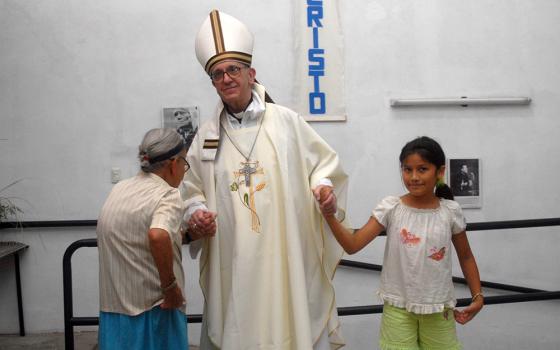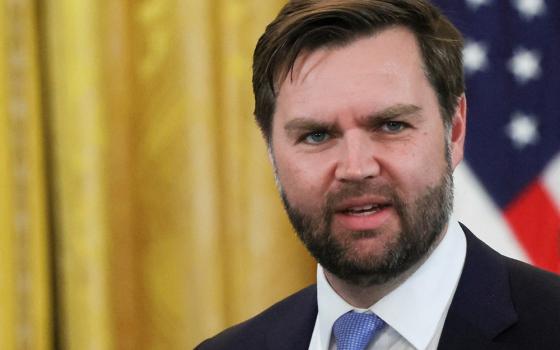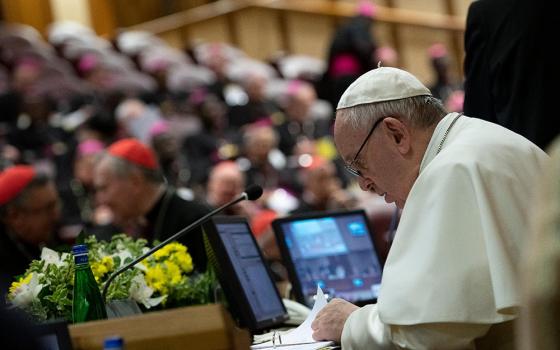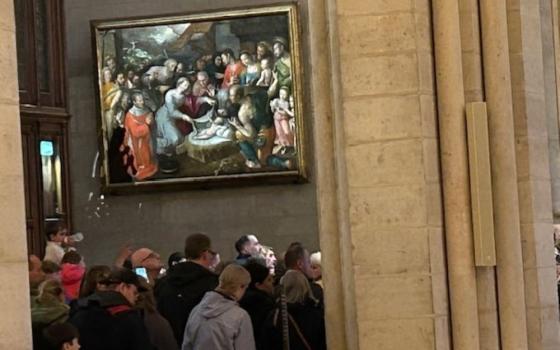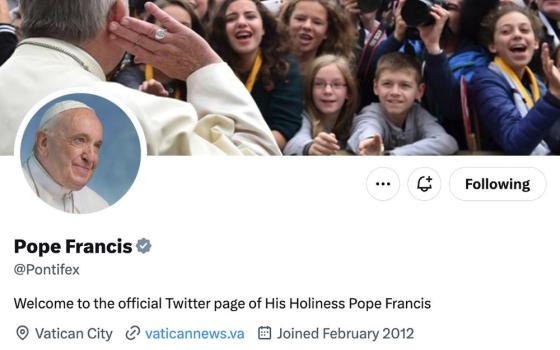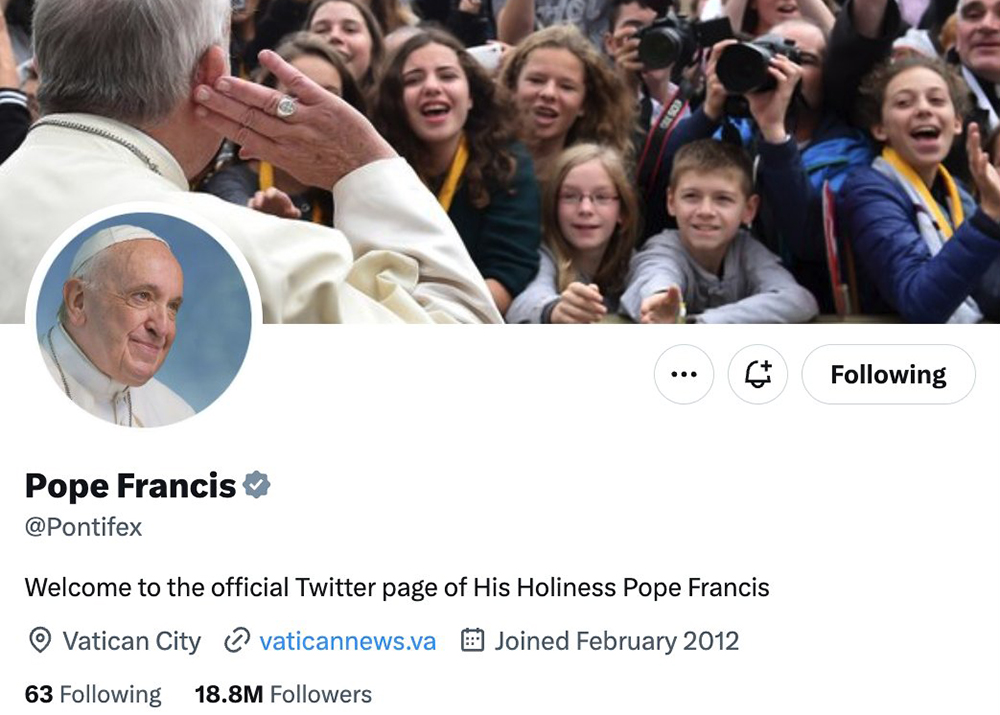
A screenshot of Pope Francis' @Pontifex Twitter account on April 21, 2023 (OSV News screenshot/Twitter)
Pope Francis was not the first pope to use social media but he greatly expanded the church's social media footprint and built a foundation for the church's ongoing ministry in the "digital continent."
When he was elected in 2013, Francis was celebrated as the first Latin American pope. It seems only fitting that such a groundbreaking pope would be the one to charge fearlessly into the digital continent as well.
The first pope to use social media was Pope Benedict XVI, who sent his first tweet and imparted his first blessing via social media on Dec. 12, 2012. Benedict, through his communications team, was active on the platform for a few months until his resignation on Feb. 28, 2013. After he stepped down, the account was scrubbed — every tweet was erased, and the name was changed to "Sede Vacante" until the election of Francis a few weeks later.
About 30 minutes after Francis' election the first tweet sent in his name was :"Habemus Papam Franciscum"and the rest was history.
Though he was not the one to officially click "send," Francis approved thousands of tweets over his pontificate, authorized social media campaigns and even expanded the papal media presence to Instagram. As of 2025, the papal X (Twitter) account operated in nine languages with over 53 million followers.
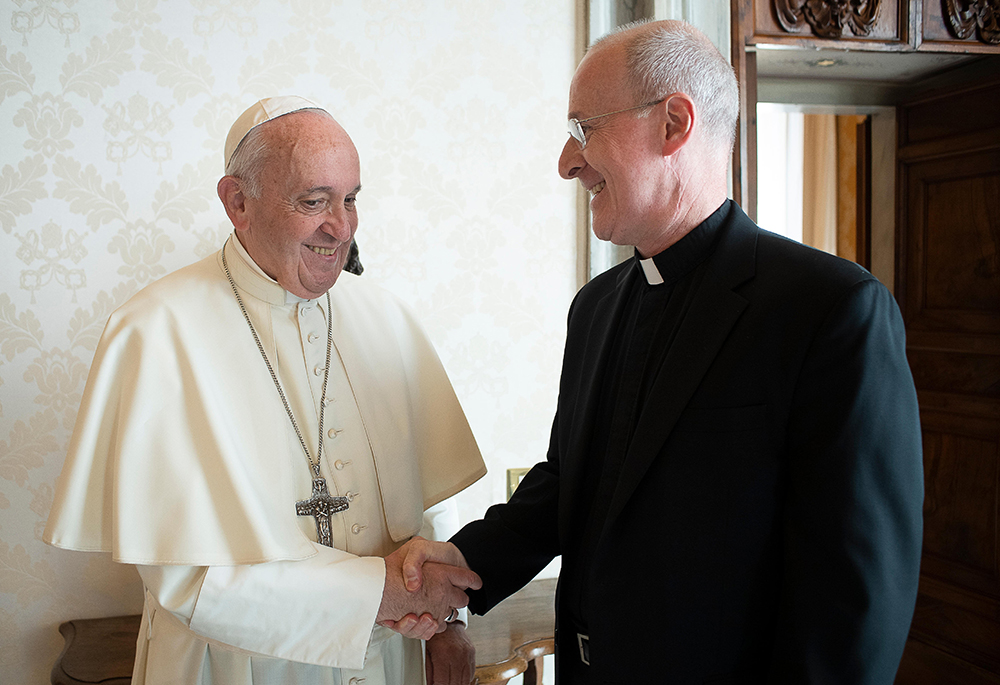
Pope Francis greets Jesuit Fr. James Martin, author and editor at large of America magazine, during a private meeting at the Vatican in this Oct. 1, 2019, file photo. (CNS/Vatican Media)
Francis' social media work was not limited to accounts branded in his name. Under his leadership, the Vatican's Dicastery for Communication was empowered to be ambitious, carving out new pathways for interaction throughout digital media platforms — maintaining a robust "Vatican News" social media presence on Facebook, X (Twitter), YouTube, and Instagram.
Jesuit Fr. James Martin, consultor to the Vatican's Dicastery for Communication, spoke highly of the Vatican's social media presence under Francis' pontificate. "I thought that the Dicastery of Communication did a great job in getting Francis' message out in creative ways," he said in an email.
"And the proof is in the pudding: just look at how many followers he had on those platforms and how many people relied on them to learn about his pilgrimages, his encyclicals, his Angelus messages and, of course, fun photos of him with Catholics from around the world."
Advertisement
Francis was not content simply to spread the church's influence across the digital continent. Throughout his yearly messages for World Day of Social Communications (Jan. 24), he created a new digital media ethos, emphasizing the virtues of listening and encounter, condemning fake news, and even inspiring thoughtful conversation about artificial intelligence.
"It is up to us to decide whether we will become fodder for algorithms or will nourish our hearts with that freedom without which we cannot grow in wisdom," Francis said in his closing message for the 58th World Day of Social Communications in 2024.
Under Francis' pontificate, the Dicastery for Communication published the landmark document "Towards Full Presence: A Pastoral Reflection on Engagement with Social Media" which charted a course for the church's work on the "digital highways" rooted not in selfish pursuit of attention, but in "forging a communion that unites us to Christ."
This year's Jubilee of Hope even featured a special event for communications in January.
"There is a whole Jubilee event for Digital Missionaries and Influencers, which should give you a sense of how seriously he took that as a means of evangelization," said Martin.
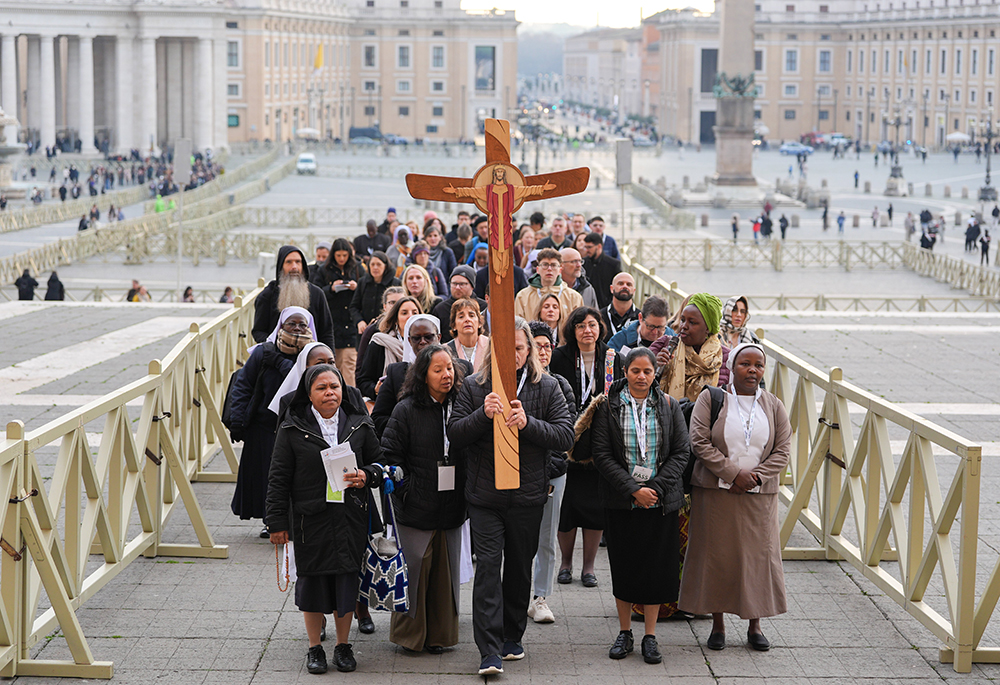
Pilgrims make their way through St. Peter's Square toward the Holy Door of St. Peter's Basilica during the Jubilee of the World of Communications at the Vatican on Jan. 25, 2025. (CNS/Lola Gomez)
That event had a profound impact on Rose Brennan, editor of Fairfield County Catholic in the Diocese of Bridgeport, Connecticut.
"To specifically choose Catholic communicators for recognition during the Jubilee Year — the first group, I might add — validates the work we do and it communicates to others its necessity.
Pope Francis' call to be pilgrims of hope directly influences the work I do as a Catholic communicator," she said.
Despite the extensive progress made to expand the scope of the Vatican's digital apparatus under Francis, the social media landscape remains more volatile and divided than ever with platforms rapidly polarizing and vitriol proliferating at an alarming level. Sadly, some Catholic groups on social media have only magnified these trends.
"I've seen bishops who were once very active on social media find themselves driven away by trolls," said Catholic communications professional Mike Lewis.
Lewis, founder of the blog "Where Peter Is" has experienced angry vitriol and hateful rhetoric for his moderate, pro-Francis positions.
"I've seen church officials and members of the clergy harm their reputations and job security by posting controversial or candid things on social media. Other important church figures only post platitudes or official business on social media. Some do themselves and their constituencies a disservice by ignoring social media altogether," he told the National Catholic Reporter.
When speaking or writing about social media, Francis and his team seemed to understand this nuance: that social media could be a remarkable tool for connection, but one also filled with temptations and challenges.
Michael O'Loughlin, author of The Tweetable Pope, told NCR in an email that the pope's social media legacy was "innovative at times" but reflective of the sensibilities of the people.
"I'm not sure I would call it groundbreaking," said O'Loughlin, who is the executive director of Outreach, an LGBTQ resource. "But I think that might be more indicative of a growing fatigue and even distrust of social media more broadly by everyday people. Perhaps Francis and his team sensed this and decided to be present if not totally immersed in the digital space."
Throughout his papacy, Francis repeatedly demonstrated the ability to navigate complex situations with a compassionate heart and a resolute determination to preach the Gospel. In doing so, he repeatedly preached about the necessity to bring hope in the face of a culture of death both on social media and in the "real world."
True to form, the 88-year-old pope's final post on social media captured that ethos perfectly: "Christ is risen! These words capture the entire meaning of our existence, for we were not made for death but for life."

